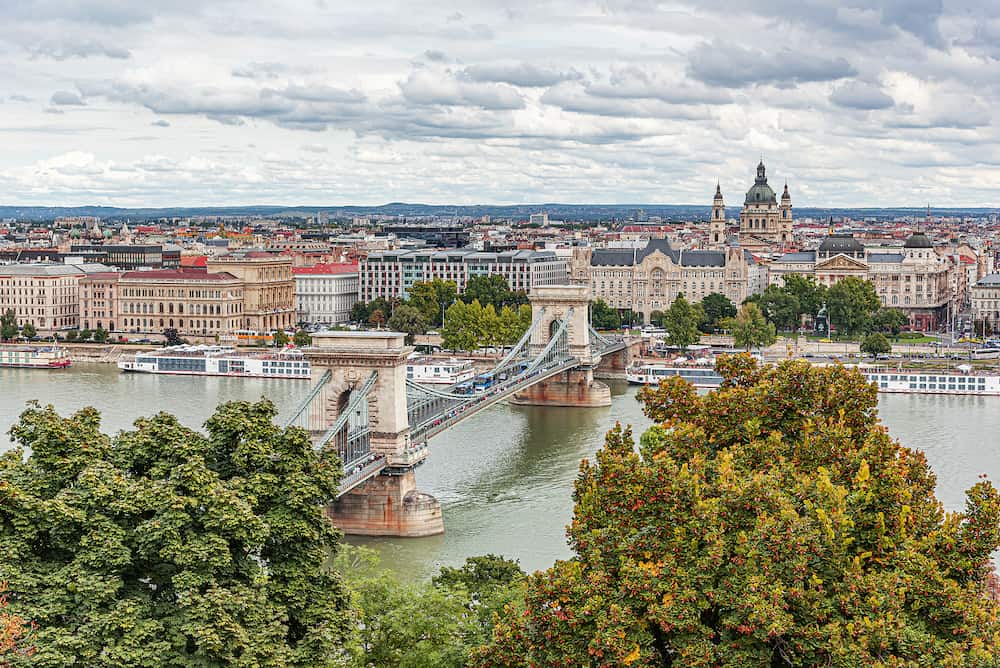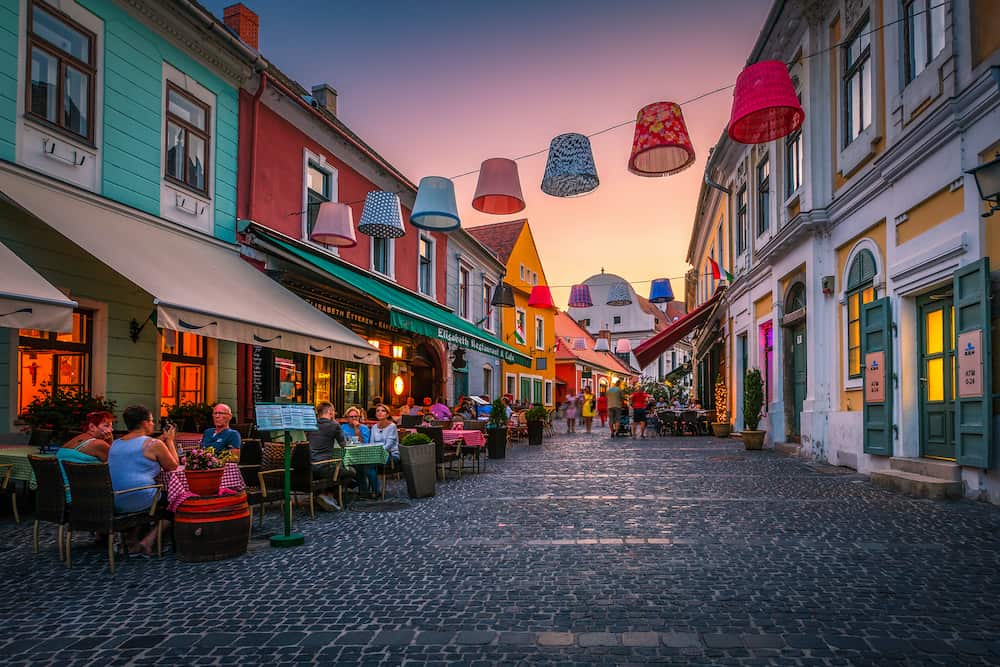3 Day Itinerary for Budapest
“Budapest is a prime site for dreams: the East’s exuberant vision of the West, the West’s uneasy hallucination of the East. It is a dreamed-up city; a city almost completely faked; a city invented out of other cities, out of Paris by way of Vienna — the imitation, as Claudio Magris has it, of an imitation”
M. John Harrison.
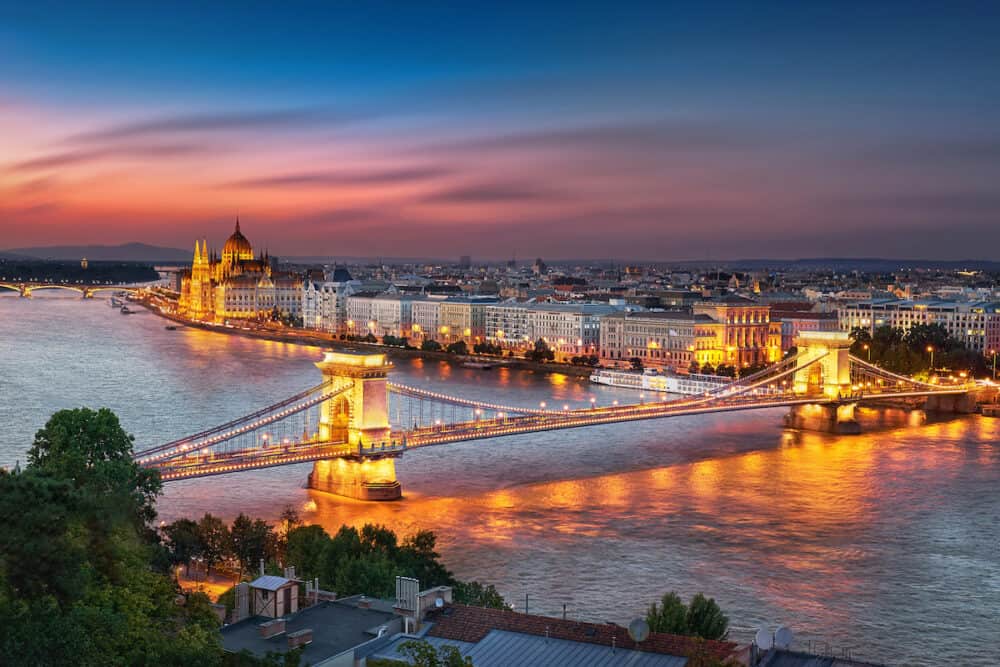
The big question is, how many days in Budapest? You can comfortably visit Budapest in 3 days or even spend 3 nights in Budapest. There’s a lot to get through and marvel at so let’s get into this 3 day itinerary for Budapest.
Spring (April to June) in Budapest brings pleasant weather with mild temperatures ranging from around 10°C to 20°C (50°F to 68°F). The city starts to bloom with beautiful flowers, and outdoor activities become more enjoyable.
It’s a great time to explore the city’s parks, take a cruise along the Danube, and visit popular attractions without the summer crowds.
Winter (November to February) in Budapest is cold, with temperatures dropping to freezing levels. However, the city’s charm remains intact with festive decorations, Christmas markets, and thermal baths offering a cozy retreat.
Winter is a great time to enjoy indoor activities like visiting museums, exploring the city’s historic sites, and indulging in Hungarian cuisine.
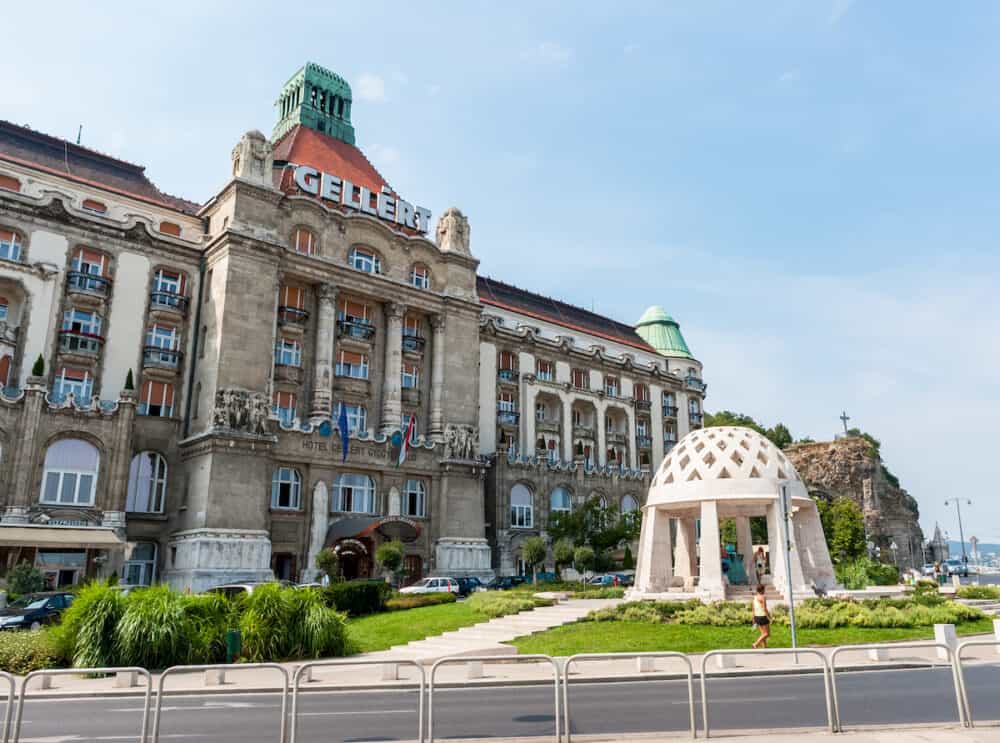
Wondering where to stay in Budapest? District V (Belváros-Lipótváros) is a central district located on the Pest side of the city, near the Danube River. It is known for its stunning architecture, elegant boulevards, and proximity to major attractions like the Hungarian Parliament Building and St. Stephen’s Basilica. District V is ideal for those who want to be in the heart of the city and enjoy a vibrant atmosphere.
District VII (Erzsébetváros) is also known as the Jewish Quarter and is famous for its vibrant nightlife, unique ruin bars, and trendy restaurants. It has a bohemian atmosphere and is a great choice for young travelers or those who enjoy a lively atmosphere.
District VI (Terézváros) is located between District V and District VII and offers a mix of upscale residential areas, cultural attractions, and trendy shops. It is home to the iconic Andrássy Avenue, which is a UNESCO World Heritage site. District VI is a good option for those who want a central location with a more relaxed vibe.
Situated on the Buda side of the city, the Castle District offers a historic and charming atmosphere. It is home to the iconic Buda Castle, Matthias Church, and Fisherman’s Bastion, providing breathtaking views of the city. This area is ideal for those who prefer a quieter environment and enjoy exploring historical sites.
Plan your trip?
Avoid hidden fees in the exchange rate while withdrawing from millions of ATMs abroad, paying in restaurants and shops, and buying your accommodation and flights using the Wise Card. You can hold up to 40+ currencies at once to spend in in over 150 countries, and convert them in real time with the free Wise app.
Need help planning your trip from start to finish? Check out these helpful links:
- Cheap flights
- Savings on accommodation from hostels to luxury hotels
- Affordable car rental options
- Affordable sightseeing tours and day trips
- Travel Adapter – All in one so you don’t have to carry a bunch around
- Don’t be silly and forget Travel Insurance! Get hurt and you’ll regret it…
This post contains some affiliate links for your convenience. Click here to read my full disclosure policy. You can also read our content/editorial policy here.
Overview Of 3 Days In Budapest Itinerary
Day 1 in Budapest:
- Central Market Hall
- Hungarian Parliament Building
- Hungarian National Gallery
- Hungarian State Opera House
Day 2 in Budapest:
- Budapest History Museum
- Dohany Street Synagogue
- Margaret Island
- Danube River Cruise
Day 3 in Budapest:
- Matthias Church
- Thermal Baths
- Ruin Bar
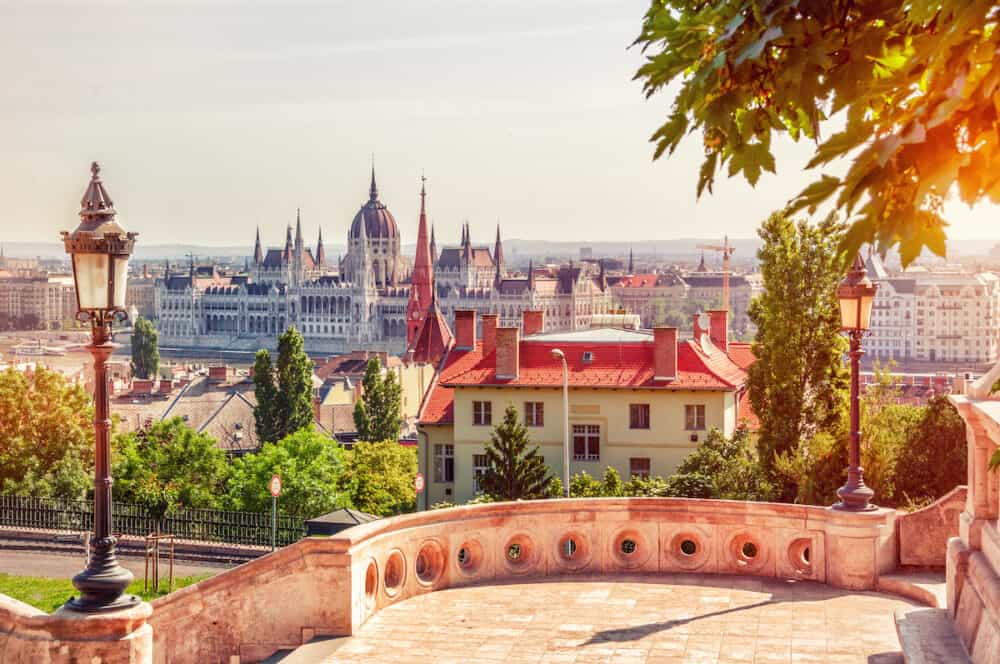
Day 1 in Budapest:
The Central Market Hall
Kick off this Budapest 3 day itinerary with a hunger buster of a place for brekkie.
The Central Market Hall, also known as the Great Market Hall or Nagyvásárcsarnok, is a prominent landmark and a popular tourist destination and is one of the largest and oldest indoor markets in the city.
The ground floor of the market hall is dedicated primarily to fresh produce, including a wide variety of fruits, vegetables, meats, fish, dairy products, and spices.
Local farmers and vendors from across Hungary gather here to showcase their finest goods, creating a colorful and fragrant display. It’s a great place to explore and sample traditional Hungarian dishes and delicacies.
On the upper floors, you’ll find an array of specialty shops and vendors selling a diverse range of products.
These include traditional Hungarian crafts, clothing, souvenirs, spices, herbs, pastries, honey, wines, and spirits. The market hall is an excellent spot to browse for unique gifts and take home a taste of Hungarian culture.
Beyond the stalls, the Central Market Hall also houses several small eateries and food stands. Here, you can indulge in traditional Hungarian dishes such as goulash, lángos (fried dough), chimney cake, sausages, and much more.
These food stalls offer an authentic culinary experience, allowing visitors to savor the flavors of Hungarian cuisine. Take yourself on a free walking tour through the stalls or join a group.
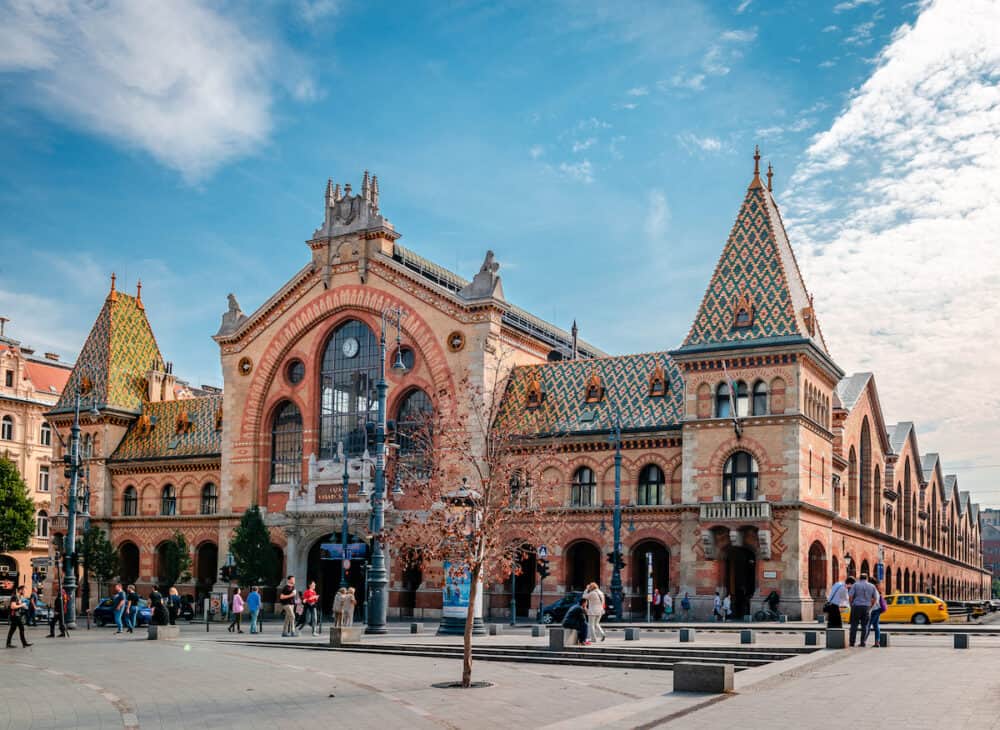
Hungarian Parliament Building
Next you’ll do some walking after all that eating, and you’ll get to brush up on some of Budapest’s intriguing past. The Hungarian Parliament Building, also known as the Parliament of Budapest is the seat of the National Assembly of Hungary. You don’t get much more traditional than this when planning your itinerary for Budapest.
The Parliament Building was designed by Hungarian architect Imre Steindl and its construction took nearly two decades, from 1885 to 1902. It spans an area of around 18,000 square meters and is characterized by its grandeur, intricate details, and imposing presence.
The building’s design was inspired by the British Parliament and incorporates elements of Renaissance and Gothic styles, resulting in a visually striking masterpiece.
The Parliament Building houses numerous offices, committee rooms, and chambers, all meticulously designed and furnished. It is home to the Hungarian Holy Crown, which is displayed in the Dome Hall and symbolizes the country’s sovereignty and historical significance.
The Parliament Building is set against the backdrop of the Danube River and is particularly captivating at night when it is illuminated, creating a magical ripple that reflects on the water.
It is also a popular tourist attraction, drawing visitors from around the world who are captivated by its architectural grandeur and historical significance. This is quickly becoming a grand Budapest itinerary to die for, isn’t it?
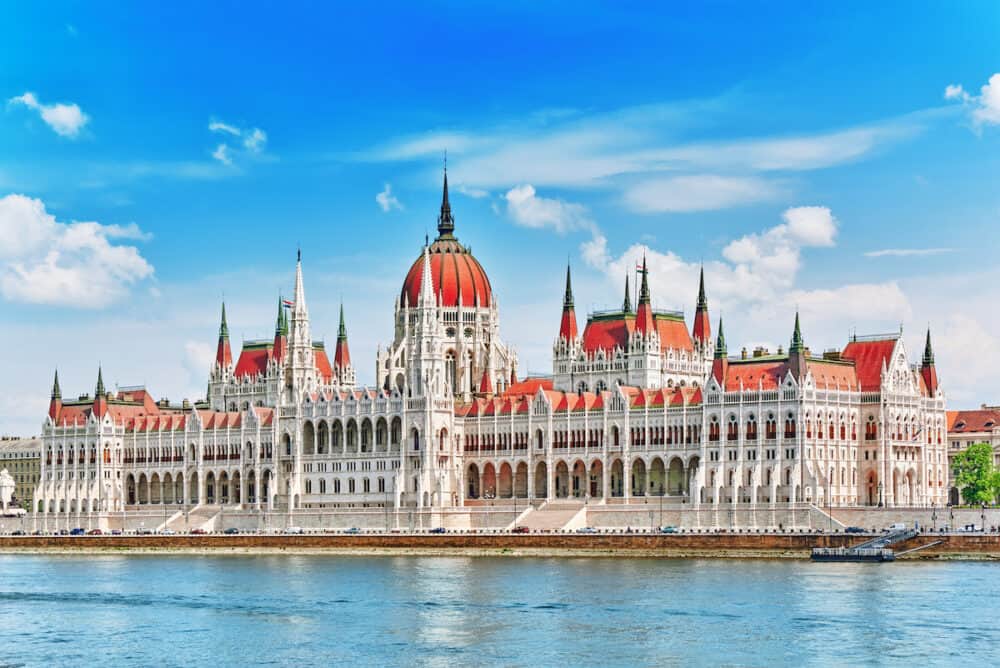
Hungarian National Gallery
After a traditional lunch, spend your afternoon wandering through the mystery and delight of The Hungarian National Gallery, also known as Magyar Nemzeti Galéria in Hungarian. It is situated in Buda Castle, a landmark overlooking the Danube River.
The museum primarily focuses on Hungarian art, showcasing a comprehensive collection that spans from the Middle Ages to the present day. It aims to preserve, exhibit, and promote Hungarian cultural heritage, making it an important institution for the country’s artistic legacy.
The Hungarian National Gallery is housed within the Royal Palace complex, occupying several levels and exhibition halls. Its vast collection includes paintings, sculptures, drawings, and prints, featuring works by renowned Hungarian artists, as well as international masters who have influenced Hungarian art.
One of the highlights of the gallery is its comprehensive collection of 19th and 20th-century Hungarian art. You can admire masterpieces by influential Hungarian painters, such as Mihály Zichy, József Rippl-Rónai, and Tivadar Csontváry Kosztka.
The collection also includes works from the Hungarian avant-garde movement, encompassing artists like László Moholy-Nagy and Béla Kádár.
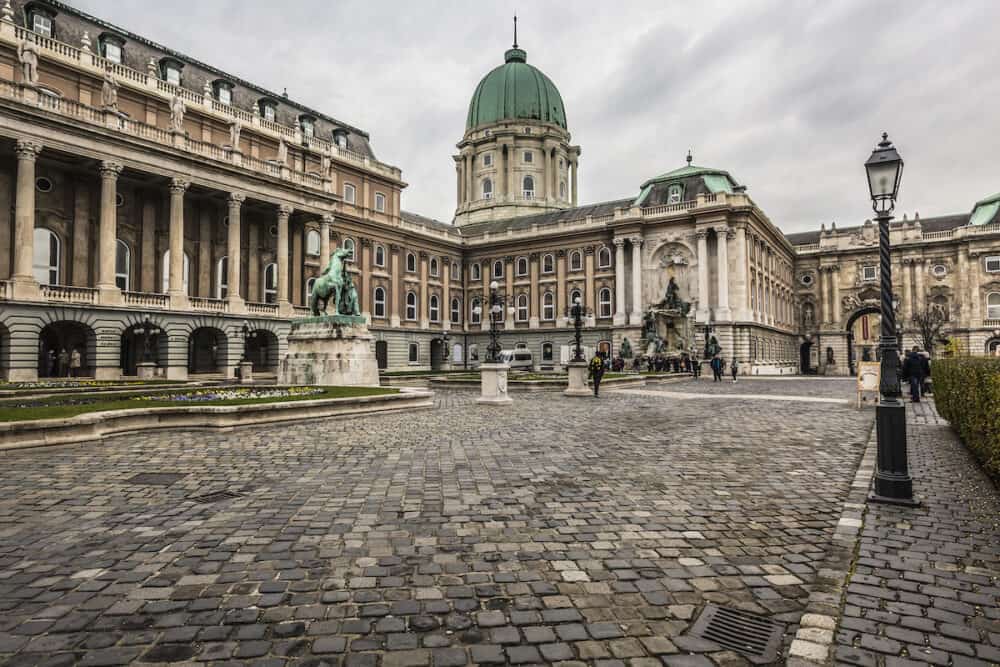
The Hungarian State Opera House
End off a superb first day in Budapest by relaxing to the sound of sweet, sweet music at The Hungarian State Opera House. It is located in the heart of Budapest, on Andrássy Avenue, a UNESCO World Heritage Site.
The opera house, also known as the Budapest Opera House, is renowned for its grandeur, opulent interiors, and world-class performances.
Designed by the famous Hungarian architect Miklós Ybl, the construction of the opera house began in 1875 and was completed in 1884. The architectural style of the building is Neo-Renaissance, characterized by its grand proportions, intricate ornamentation, and symmetrical design.
The façade of the opera house features a central pediment with allegorical sculptures representing the muses of music and dance.
The grand staircase leads to the upper levels, providing a glimpse of the ornate interiors. The main auditorium is a true marvel, with seating capacity for around 1,300 people. It showcases exquisite details, including gold leaf accents, plush red velvet seating, and a magnificent chandelier that hangs from the ceiling.
The acoustics of the opera house are exceptional, making it a favored venue for opera, ballet, and classical music performances.
The Hungarian State Opera House is home to both the Hungarian National Ballet and the Hungarian State Opera, hosting a wide range of productions from classical masterpieces to contemporary works.
Also in the vicinity, just 2 km away, is Heroes Square, which would make a wonderful end to your evening as you meander through the softly lit streets. You’ll feel as though you’re on the set of La La Land.
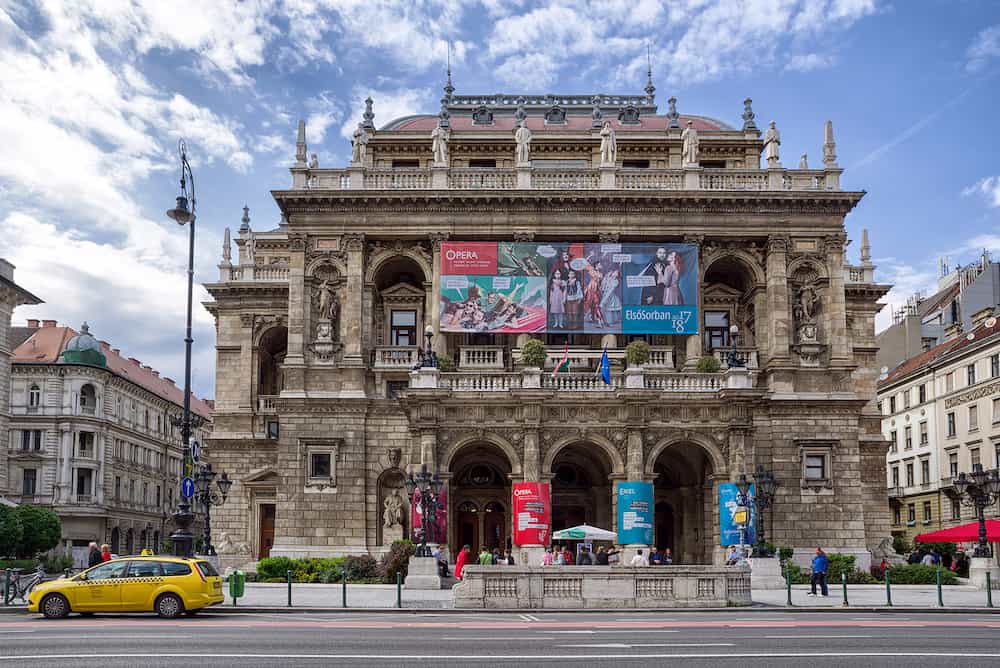
Day 2 in Budapest:
Budapest History Museum
Yesterday you had a grounding session, learning about what makes Budapest tick, twist and turn. On day 2 of this 3 day Budapest itinerary, you’ll do some more archaeological digging and engage in some bucket list activities towards the end of the day.
Starting off with the Budapest History Museum. The Museum, also known as Budapesti Történeti Múzeum in Hungarian, is located in the Buda Castle district, within the historic and picturesque Castle Hill area.
The Budapest History Museum is housed in the beautifully restored buildings of the former Royal Palace, which itself has a significant historical background. The museum’s collection is spread across several exhibition halls, each focusing on different periods and aspects of Budapest’s history.
The exhibits cover a wide range of topics, including the prehistoric origins of the region, the Roman settlement of Aquincum (the precursor to Budapest), the medieval period of Buda, the Ottoman occupation, the Habsburg era, and the modern transformation of the city.
Go on a walking tour through the museum with a local guide to discover the secrets of Hungary.
Visitors can explore archaeological artifacts such as pottery, tools, and personal objects that provide insights into the everyday life of past civilizations in the region.
The museum also displays the Hungarian crown jewels, historical documents, maps, photographs, and artworks that illustrate the city’s architectural, social, and cultural changes over the centuries.
One of the museum’s highlights is the interactive model of medieval Budapest, which offers a fascinating glimpse into the city’s layout, fortifications, and landmarks during that period.
The model provides a unique opportunity to visualize how the city appeared in the Middle Ages. Super cool, right?
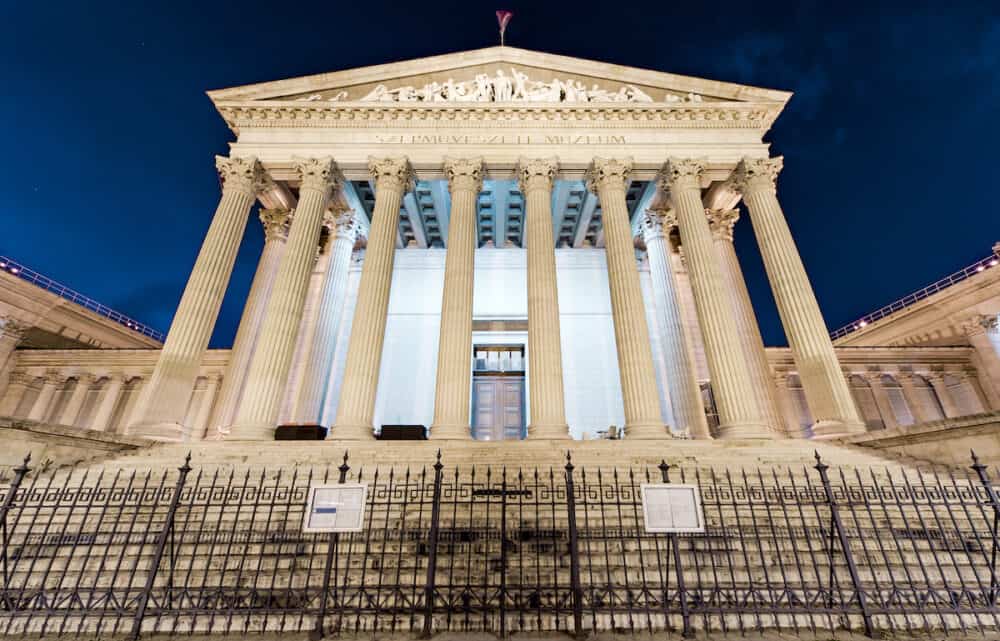
Dohany Street Synagogue
Religious or not, this historical landmark is definitely worth a visit. The Dohány Street Synagogue is one of the largest synagogues in the world and a significant symbol of the Jewish community in Hungary.
The synagogue was built between 1854 and 1859 in a magnificent architectural style that combines elements of Romantic and Moorish Revival designs.
It was designed by the Viennese architect Ludwig Förster and has a distinctive and ornate facade adorned with intricate decorative motifs and colorful ceramic tiles.
The interior of the Dohány Street Synagogue is equally impressive, featuring a spacious prayer hall with a capacity of around 3,000 worshipers.
The central nave is flanked by two smaller side aisles, and a large organ adds to the grandeur of the space. The overall design creates a sense of awe and reverence, reflecting the importance of the synagogue as a place of spiritual and communal gathering.
One of the most striking features of the synagogue is its massive ark, or holy ark, which houses the Torah scrolls.
The ark is adorned with intricate carvings and is the focal point of the prayer hall. The synagogue also contains a beautiful rose window, stained glass windows, and a magnificent chandelier that hangs from the ceiling.
Adjacent to the synagogue is the Raoul Wallenberg Memorial Park, a tranquil and somber space dedicated to honoring the memory of the Holocaust victims. It features a Holocaust Memorial, a Jewish cemetery, and a Holocaust Tree of Life Memorial, which serves as a symbol of hope and renewal.
If you enjoy Jewish history, you could also leave some time to explore the Hungarian Jewish Museum.
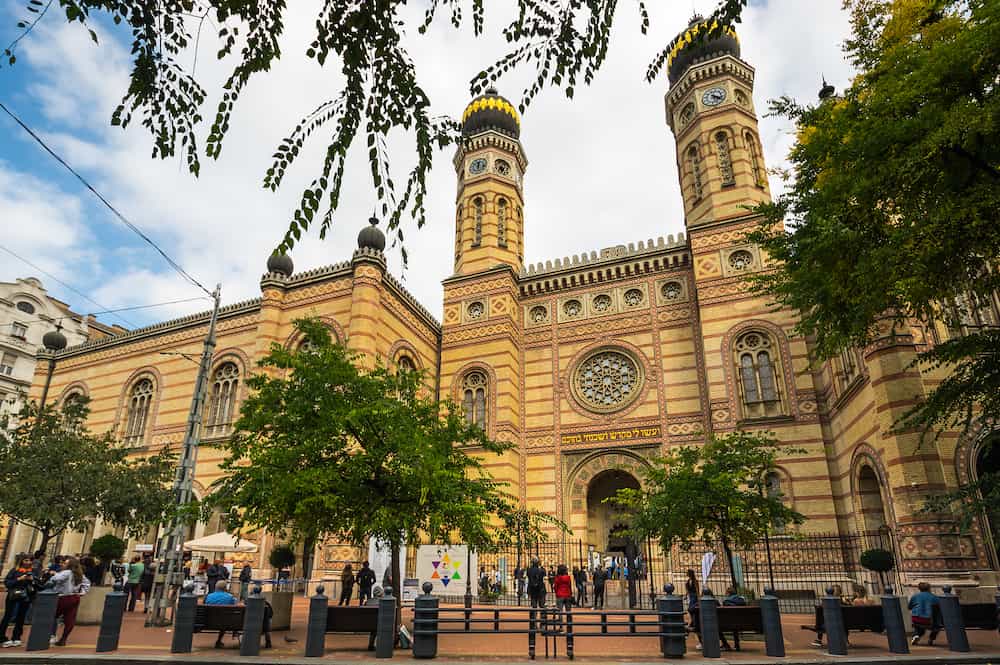
Margaret Island
Today is all about cleansing the body and soul before you head home. Covering an area of about 2.5 kilometers in length, Marga
ret Island offers a serene and green oasis within the heart of Budapest. The island was named after Saint Margaret of Hungary, and its history dates back to the medieval period when it served as a retreat for nuns.
Today, Margaret Island is a beloved park and a favorite spot for both locals and visitors alike. It is easily accessible by foot from Margaret Bridge or via tram and offers a variety of attractions and activities.
Nature lovers will appreciate the island’s well-maintained gardens, pathways, and lush green spaces. The island is adorned with colorful flower beds, tall trees, and manicured lawns, making it a perfect place for leisurely walks, jogging, or picnics.
The peaceful ambiance and natural beauty provide a tranquil atmosphere away from the city’s hustle and bustle.
The island is also home to numerous recreational facilities. The Palatinus Water Park, located on the northern part of the island, offers pools, water slides, and thermal baths, providing a fun-filled experience for families and water enthusiasts.
If you’re more of a sports kinda gal or guy, you can enjoy various sports activities on Margaret Island, including running tracks, tennis courts, mini-golf, and bicycle rentals. There are also opportunities for boating and rowing on the surrounding waterways.
One of the island’s notable landmarks is the musical fountain, where you’ll find synchronized water displays accompanied by music and lights.
The fountain provides a delightful spectacle, particularly during the evening hours. The afternoon of your second day in Budapest could not be more perfect.
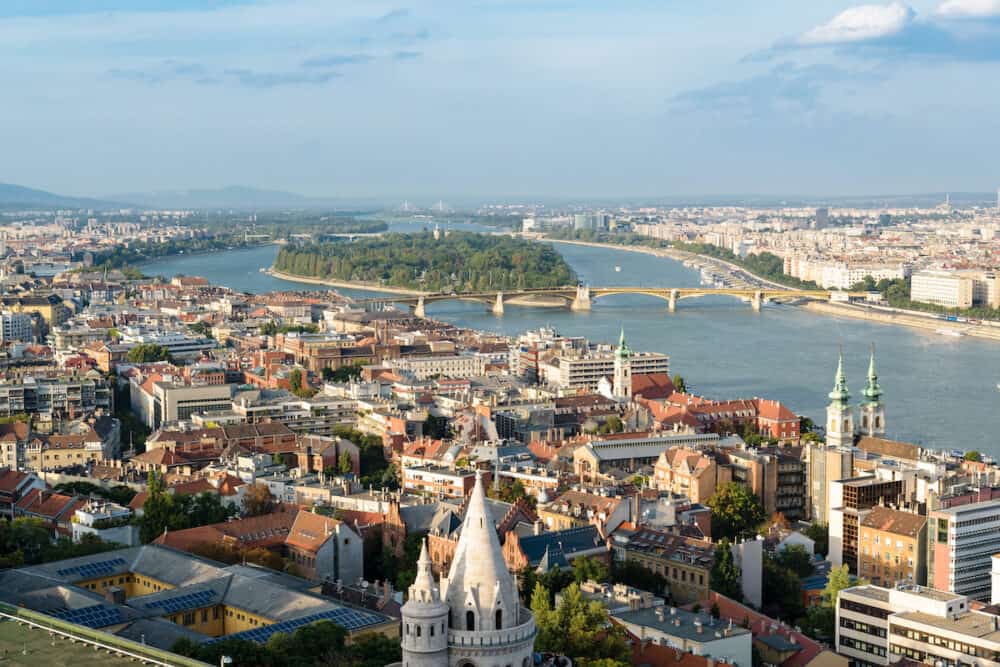
Danube River Cruise
Good food, classy wine and an outrageous sunset? Yes, please! A typical Danube River cruise begins in Budapest and follows the meandering course of the river, taking passengers through a series of breathtaking landscapes and charming towns. It’s one of the most stunning things to see in Budapest in 3 days.
Take a day or Night river cruise?
70-minute Budapest River Danube cruise. Check out landmarks like the Chain Bridge and Hungarian Parliament from the water. Enjoy your choice of a glass of Champagne, wine, beer, soda, or mineral water.
Enjoy a day time cruise or enjoy the Budapest sights with an evening cruise.
As the cruise ship or boat glides along the Danube, you can relax and enjoy the ever-changing scenery.
The banks of the Danube are dotted with picturesque villages, medieval castles, and ancient fortresses, creating a fairy-tale atmosphere.
One of the highlights of a Danube River cruise is the opportunity to visit the historic towns that line the riverbanks.
During the shore excursions, you can explore the cultural treasures and landmarks of these cities, accompanied by knowledgeable local guides.
They may visit magnificent cathedrals, stroll through lively marketplaces, and sample local cuisine and wines.
The cruises often offer a range of optional excursions, allowing passengers to tailor their experience to their interests. You might also get to see the Széchenyi Chain Bridge that connects Buda and Pest.
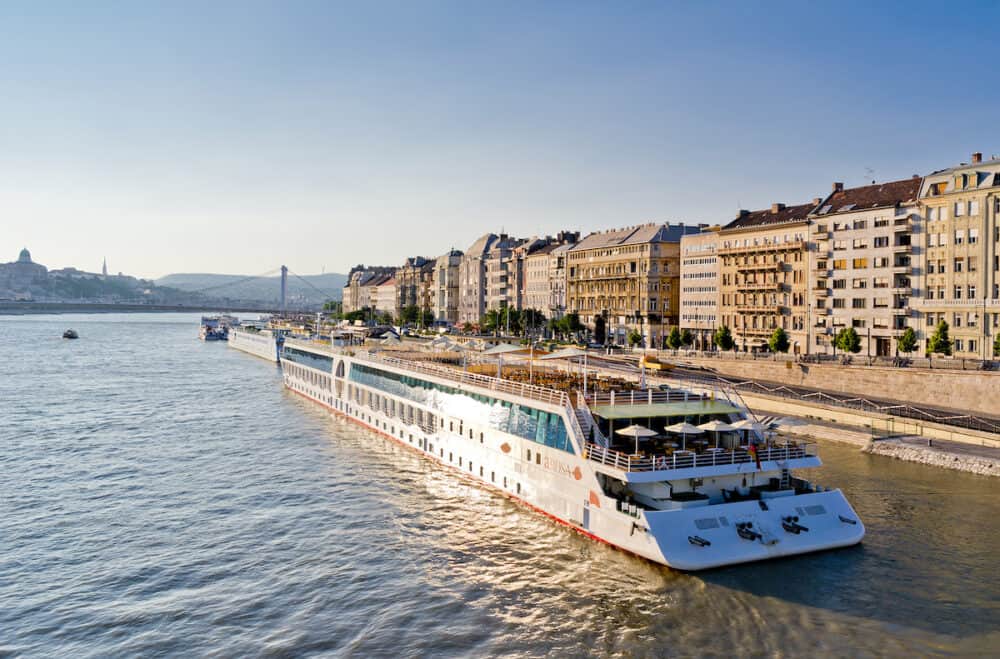
Day 3 in Budapest:
Matthias Church
Today is your last day in the grand, old Budapest. Pack your thinking cap and your bathing suit because today you’ll finish off your time in Budapest in the most remarkable and iconic way.
Matthias Church, also known as the Church of Our Lady or Mátyás-templom in Hungarian, is one of the most prominent and visited churches in the city, renowned for its stunning architecture, rich history, and significant role in Hungarian culture.
Situated in the Buda Castle District, Matthias Church stands atop the historic Castle Hill, offering immaculate views of the city. Its origins date back to the 11th century when a Romanesque-style church was first built on the site.
Over the centuries, the church underwent various transformations and renovations, resulting in its current Gothic Revival and Neo-Gothic architectural style.
The exterior of Matthias Church is characterized by its elaborate and intricate design elements. The facade features a colorful tiled roof with a distinctive diamond pattern, ornate stone carvings, and statues of Hungarian kings and saints. The tall, slender spires reach skywards, adding to the church’s striking appearance.
One of the highlights of Matthias Church is the stunning Matthias Altar, a masterpiece of late Gothic sculpture. Carved from wood and adorned with intricate details, the altar depicts scenes from the life of Jesus and the Virgin Mary.
The chapel dedicated to King Stephen I of Hungary, the country’s first Christian king, is another notable feature within the church. It houses the king’s sacred relics and serves as a place of pilgrimage for many. Oh it’s such a sight to behold! These moments take travel to the next level.
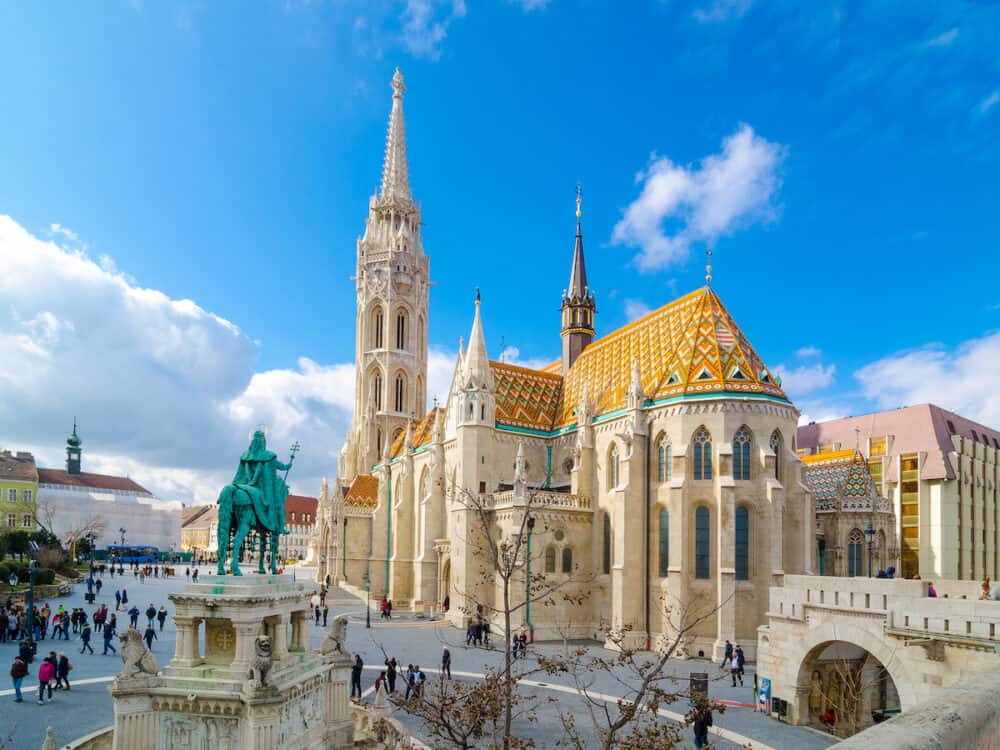
Thermal Baths
Splish splash you were taking a bath… in Budapest. Budapest is renowned for its thermal baths, which have been an integral part of Hungarian culture and tradition for centuries.
These thermal baths are a unique and relaxing experience, combining the healing properties of natural thermal waters with stunning architectural beauty.
Located in the City Park, Széchenyi is one of the largest and most popular thermal baths in Europe. It features a range of indoor and outdoor pools, including thermal pools of varying temperatures, whirlpools, and a unique thermal maze. The grand Neo-Baroque architecture adds to its charm.
Situated in the Gellért Hotel, this Art Nouveau-style thermal bath offers an exquisite experience. The thermal complex includes indoor and outdoor pools, saunas, steam rooms, and a beautiful sun terrace. The main hall, adorned with colorful mosaics and statues, is a sight to behold.
With a history dating back to the Ottoman era, Rudas Thermal Bath showcases an impressive blend of traditional and modern design. Its centerpiece is the octagonal pool covered by a stunning dome.
You can enjoy thermal baths, steam rooms, and various wellness treatments. On certain days, it offers late-night bathing with a unique atmosphere.
Király Bath is one of the oldest thermal baths in Budapest, built during the Turkish occupation. The Ottoman-era architecture creates a sense of stepping back in time. The thermal baths have a serene atmosphere and feature thermal pools, steam rooms, and massages.
And that’s just to name a few. So many baths, so little time… If you want to take advantage of a free bath, free museum entrance and transportation savings, you could consider getting a Budapest card.
Different Thermal Bath package options:
- Széchenyi Thermal Spa Full-Day Tickets
- 45 Minutes BeerSpa and Full Day Szechenyi Ticket
- Ticket to Széchenyi Spa with Dinner & Cruise Combo Deal
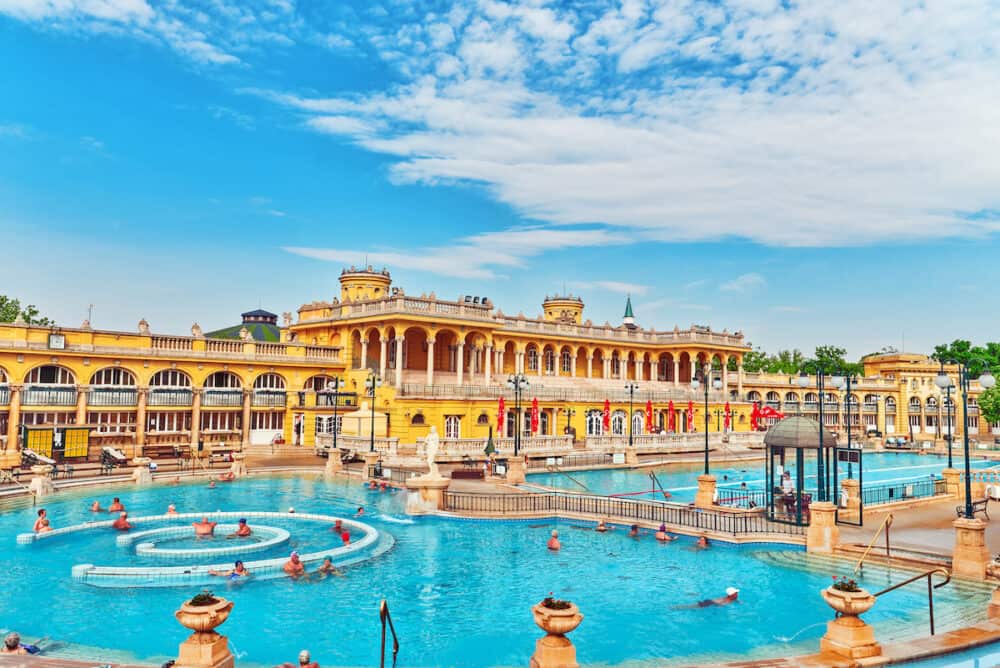
Ruin Bar
A 3 days in Budapest itinerary would not be complete without spending your last few hours in a ruin bar.
Ruin bars have been set up amongst the ruins of the city of Budapest, creating a medieval, ancient atmosphere to sip a sophisticated cocktail or traditional Hungarian drink.
Check out local favorites such as Szimplar Kirt, Instant/Fogas, Csendes and Kőleves Garden. There’s only one more thing to say, “Cheers to Budapest!”
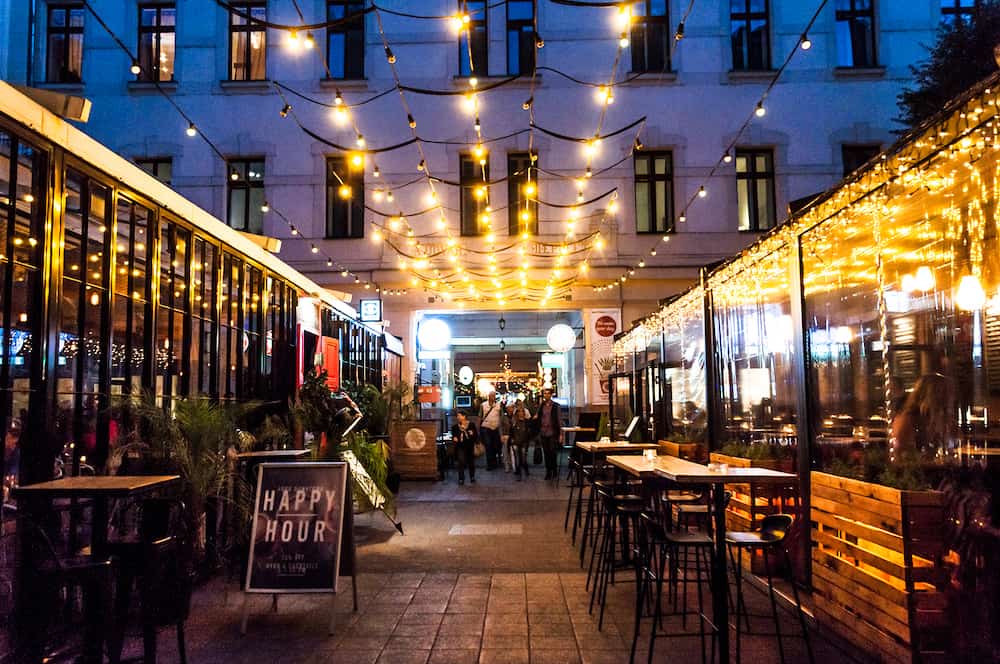
You won’t be searching “Budapest – What to do in 3 days” after reading through this itinerary. Budapest is a city that has an ambience and fluidity similar to that of Luna Lovegood from Harry Potter, in the best way possible.
Let’s not forget the aged European character that has retained its authenticity despite the multicultural influence over the years.
If you’ve watched the Grand Budapest Hotel and believe that the scenes are anything to go by when visiting Budapest, you’re right and totally in for a treat. By the end of your trip, you’ll be the guide telling others what to see in Budapest in 3 days.
Recommended tours in Budapest
- Budapest: Dinner & Cruise on the Danube with Folklore Dance Show & Live Music
- Half-day Wine Tasting Tour in Etyek Wine Country near Budapest
- Budapest All in One Walking Tour with Strudel Stop
- Budapest Danube River Candlelit Dinner Cruise with Live Music
- Budapest Danube River Sightseeing Day Cruise
- Budapest Historical Sightseeing – Walking Tour
- Budapest Tuk Tuk City Tour
- Hungarian Wine Tasting (with Cheese and Charcuterie) in Budapest
- Budapest Culinary & Wine Walk
- Bingo Bar Crawl
- Budapest Bike Tour with a Hungarian Goulash
- Buda Castle Tour
- The 10 Tastings of Budapest With Locals: Private Food Tour
- Budapest City Walk in Jewish Quarter
- Budapest Castle District Walking Tour
Read more on Budapest:
If you’d like to save it for later, please save it to Pinterest.

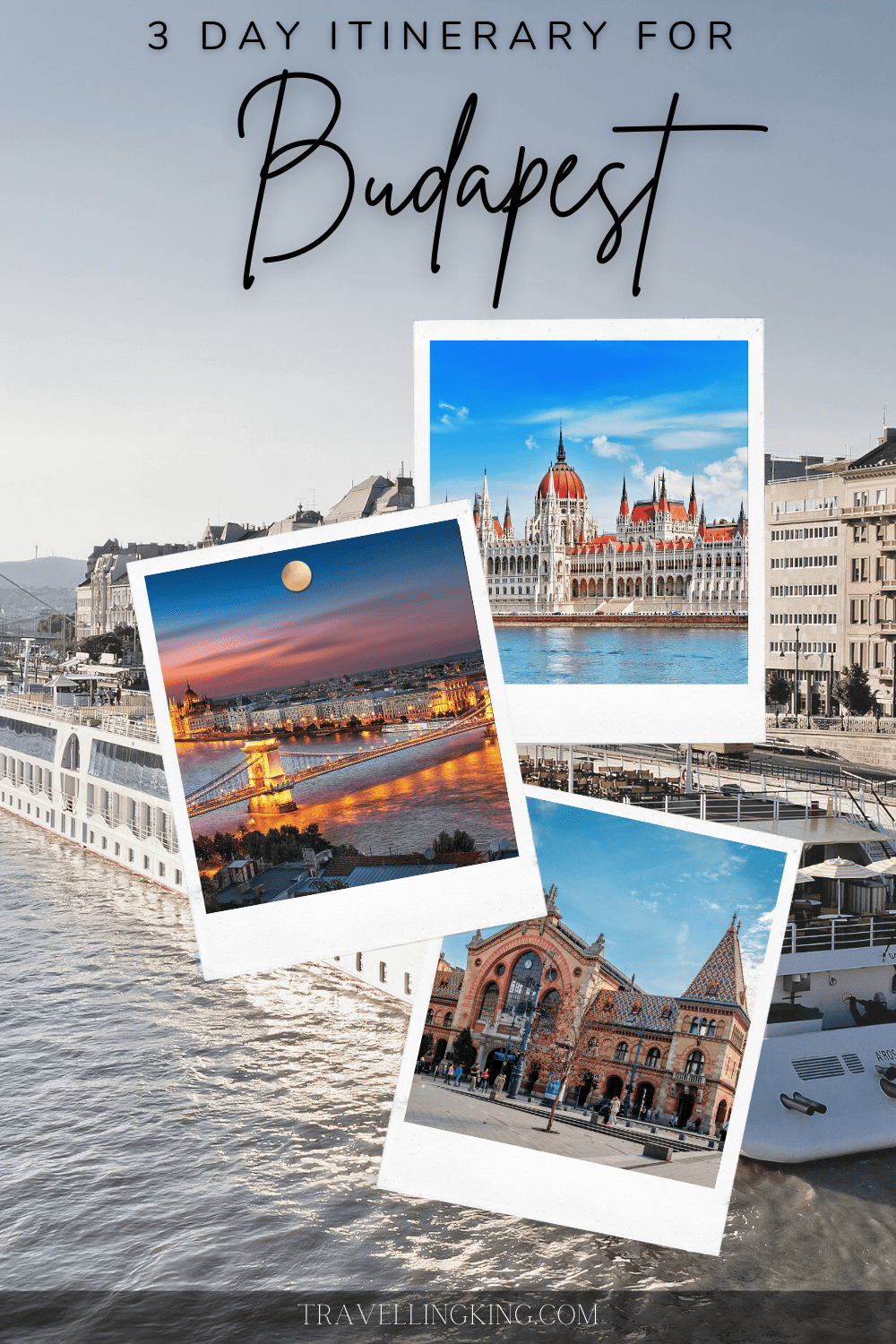



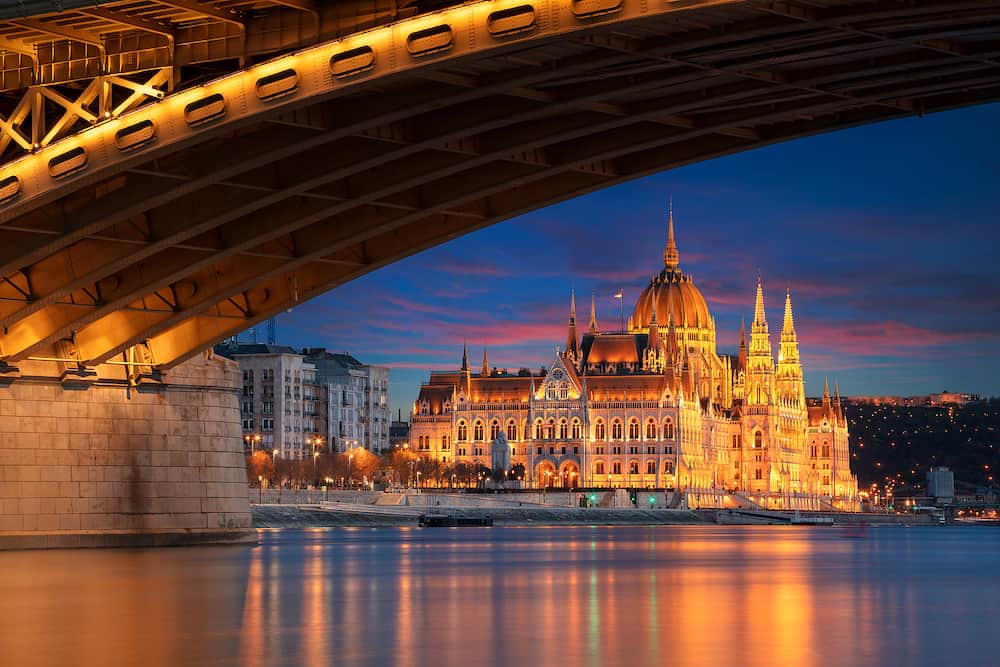
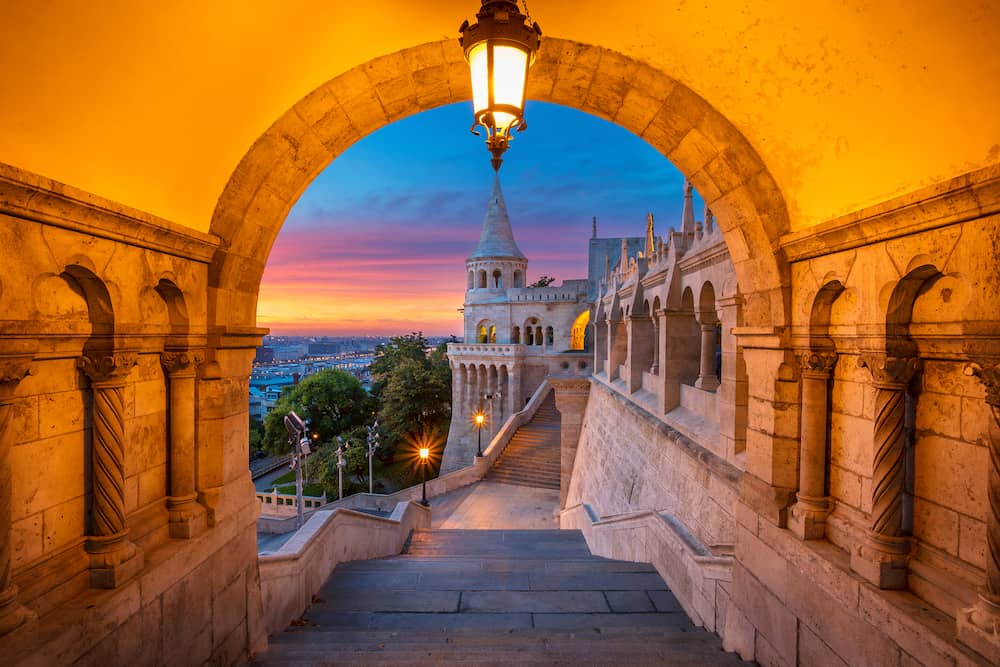
![Where to stay in Debrecen [Best Places to Stay for 2024]](https://www.travellingking.com/wp-content/uploads/2023/06/Debrecen-view-of-the-millenium-fountain-.jpg)
